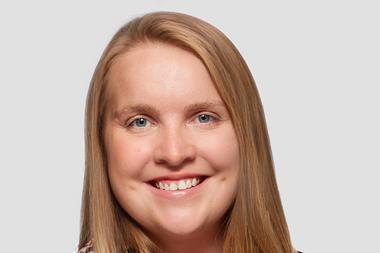Insurance Times speaks to two broker chief executives to hear the arguments for both returning to the office and maintaining continued flexible working
Everyone will remember how they felt during those first few weeks of the Covid-19 pandemic – and as government reports of case numbers rose, a decision was made that will go down in the history of work.

On 16 March 2020, former prime minister Boris Johnson told the working population of the UK to start working from home where they possibly could.
While this was initially implemented as a temporary measure, few employees have since returned to their offices five days a week – flexible working has remained the most enduring aspect of the pandemic era.
According to an Office for National Statistics report published in May 2022, the proportion of homeworkers that planned to work mostly from home and only sometimes in an office was the fastest growing segment of the UK population.
In November 2022, research from professional social media site LinkedIn revealed that 34% of 2,000 UK adults polled said they would quit their jobs if they had to return to the office full-time.
Brokers are part of this debate too.
While the majority will have been in their offices or seeing clients five days a week pre-pandemic, the impact of working from home orders means most brokers have now opted for a middle-of-the-road position, working two or three days a week in the office and two or three days at home.
It will come as a surprise to no one that this has impacted how brokers work. But have these changes been largely positive or negative?
Five days a week
The Romero Group is an independent broker with offices located primarily across northern England. It employs more than 200 staff.
At the onset of pandemic linked work from home orders, its management sent staff home – but the decision was made to bring staff back into the office full-time as soon as possible.
Simon Mabb, group managing director of the Romero Group, explained: “July 2022 was D-Day, when the government said there was no requirement for people to be working from home and we basically took a decision to get people back in at that point.”
The firm set up precautions to minimise the potential spread of Covid-19, but quickly found that their employees’ wellbeing was positively affected by returning to a collaborative environment.
Mabb noted that although Romero Group recorded no large drop in productivity during the pandemic when workers were at home, staff were becoming increasingly isolated as the pandemic dragged on.
Read: Mid-market commercial insurance must adapt to ‘on demand’ culture, says Upsurance boss
Read: Brokers want more support from insurers when handling complex claims – Allianz
Explore more diversity and inclusion-related content here or discover other news analysis content here
Mabb said: “We actually found that some people were really struggling to work from home and their wellbeing was impacted positively by coming in and being able to have a cup of tea and a chat.
“We took lots of [Covid-19] precautions, but what we found is that people overwhelmingly wanted to come back into the office. It was the social element, the chatting, that people really missed.”
Keeping up appearances
While the social wellbeing of staff was a top concern for Romero Group, the image it wanted to portray to clients was another factor in the decision to get staff back to their office desks.
Mabb explained: “A lot of our customer base is in construction or manufacturing – people that were in their premises throughout the pandemic – and we were seeing some of our bigger competitors refusing to provide proper service.
“For those clients, it’s quite frustrating if they speak to an organisation and hear that [something can’t be done] because of Covid because that’s been and gone.
“It was the biggest excuse for poor customer service and we didn’t want to fall into that trap.”
The broker’s decision ultimately paid off - Mabb noted that the business grew by around 40% in the two years to April 2022, with the broker’s emphasis on service attracting new clientele – another benefit of the full-time office model, according to Mabb.
Romero Group has additionally been taking on small cohorts of graduate and A-level trainees since 2021 – Mabb believes these young new starters have benefited from being in the office environment.
He explained: “It’s great having these trainees in, but they have to learn from someone.
”As a broker, a lot of things come at you on a regular basis and it’s alright working from home if you’ve had 20 years’ [experience], but how do you train the people who have only been doing [the job] for a year or two?
“Ordinarily, [newer staff] would have been sat next to a more experienced person and could ask them questions – but people simply don’t pick the phone up or send an email to find something out in the same way as if they’re sat across from someone.”
Overall, returning to the office full-time has worked for Romero Group – it has been positive for staff wellbeing, allowed new staff to be trained effectively and helped the business to attract new clients.
Read: Briefing - Whitehall staffing conundrum spreads to Square Mile
Read: Briefing - Is a four-day working week the ‘pinnacle of work-life balance’ for insurance sector?
Explore more diversity and inclusion-related content here or discover other news analysis content here
The alternative
On the opposite end of the spectrum to Romero Group’s approach is another broker – Konsileo – which employs 80 staff.
When Insurance Times last spoke to the firm in the summer of 2022, its chief executive John Warburton espoused the benefits of its ‘RoboCop model’ – where technology is wrapped around a human broker to augment the advisory relationship between clients and broker.
Konsileo has used a working from home model since before the Covid-19 pandemic and Warburton believes that the homeworking developments of the past few years are a vindication of what can be achieved through the power of technology and culture.
The broker’s staff now mostly meet up in-person once or twice a month, most often by renting a room in a pub or restaurant for half a day to get together and work through pressing issues.
Outside of this, the firm’s lack of traditional management structure and culture of trust requires its employees to work and collaborate with their colleagues where they see the need to.
Warburton explained: “At the beginning of the pandemic, we had a working from home model, but through the pandemic, we have ended up with a fully virtualised way of working.
“It’s absolutely true that working from home can be isolating if you’re just thinking about working from home with the same processes as you had in the office – but that’s a problem of half-heartedly copy and pasting office-based ways of working into the home environment.”
Warburton said that while most brokers will have implemented a virtual collaborative programme, such as Microsoft Teams or Slack, really leaning into the flexible working model involves intentionally creating a culture where “you are able to have meaningful, collaborative conversations with clients and about client-related topics with someone you’re working with”.
For example, Konsileo has instructed its staff to make as much use as possible of video calls in an effort to recreate the ability for colleagues to talk across desks.
“When thinking about this, you get into the question of have you got a culture and management structure that allows people to create community and work together with some trust, even though they’re not seeing each other face-to-face,” Warburton added.
Read: Opinion - Hybrid ‘new normal’ yet to be clarified across UKGI
Explore more diversity and inclusion-related content here or discover other news analysis content here
Konsileo has also grown throughout the pandemic and is now adding between six and eight staff to its ranks each month. It is also on track to double its revenue for this year, although Warburton said this was from “a small base”.
Konsileo’s commitment to flexibility from the ground up is a benefit when searching for new staff too, noted Warburton.
He continued: “If we were looking for a broker from a traditional office-based position, in Glasgow for example, but our perfect candidate was in Perth, then we’d be in a bad position. With our model, we can target the best talent – no matter where they are geographically.”
As with Romero Group, Konsileo’s decision to stick to its working model has been largely influenced by a concern for client service and employee wellbeing.
Stick or twist?
It is clear from the examples of Romero Group and Konsileo that the real solution to the question of flexible working is for brokers to do what works best for them – they do, after all, come in all shapes and sizes.
However, brokers must have a plan of action for their working model that is based on employee feedback and that takes staff wellbeing seriously.
And, because clients and their relationships with brokers remain the lifeblood of broking businesses, client satisfaction must also be a priority.
If flexible working is to continue, it must be fully supported by cultural adaptations and sufficiently smooth-running technology – otherwise, customers may begin to vote with their feet.













































No comments yet